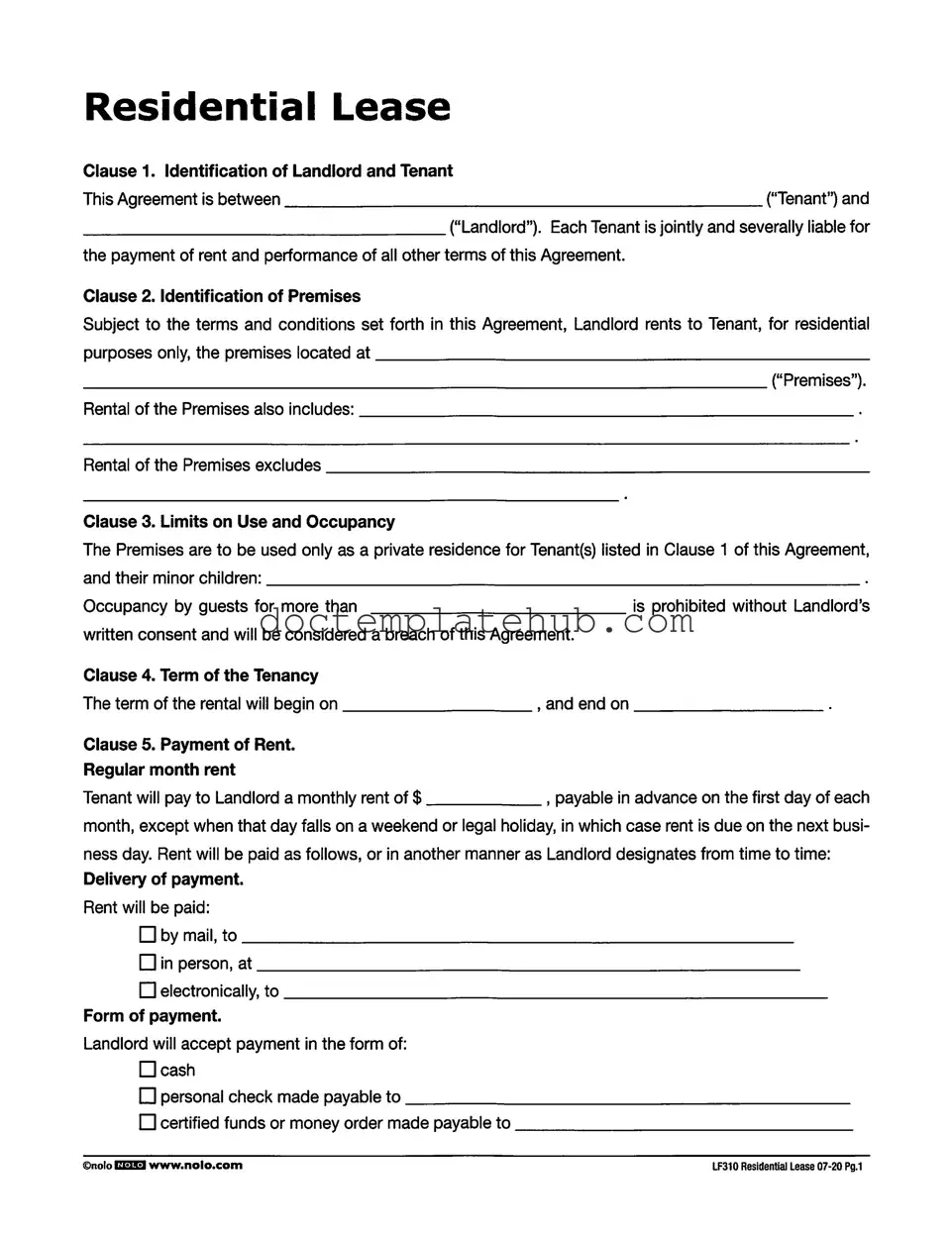What is the purpose of the LF310 Residential Lease form?
The LF310 Residential Lease form is designed to establish a legal agreement between a landlord and tenant for renting a residential property. It outlines the rights and responsibilities of both parties, including payment terms, occupancy rules, and conditions for termination. This form helps ensure clarity and protection for both the landlord and tenant throughout the rental period.
Who is identified in the LF310 Residential Lease?
The LF310 form requires the identification of both the landlord and tenant. Each tenant listed in the agreement is jointly and severally responsible for paying rent and fulfilling all terms of the lease. This means that if one tenant fails to pay their share, the others are still liable for the full rent amount.
What are the limits on use and occupancy of the premises?
The premises rented under the LF310 form are intended solely for residential use by the tenants and their minor children. Any guests staying for an extended period without the landlord's written consent may be seen as a violation of the lease. This clause helps maintain the intended use of the property and ensures that the landlord can manage occupancy effectively.
How is rent payment structured in the LF310 Residential Lease?
Rent is typically due on the first day of each month and must be paid in advance. If the due date falls on a weekend or holiday, payment is expected on the next business day. The landlord can specify the payment method, which may include options like cash, checks, or electronic transfers. Additionally, the first month's rent may be prorated based on the move-in date.
What happens if rent is paid late?
If the rent is not paid in full within a specified number of days after the due date, a late charge will apply. This charge consists of a flat fee plus an additional amount for each day the rent remains unpaid, with a maximum cap for the total late fee in any given month. This provision serves as an incentive for timely payment while acknowledging the difficulty in determining actual damages from late payments.
What is the security deposit requirement?
Upon signing the LF310 Residential Lease, the tenant must pay a security deposit to the landlord. This deposit cannot be used to cover the last month's rent or any other fees without the landlord's written consent. After the tenant vacates the premises, the landlord is required to return the deposit within a specified timeframe, along with an itemized statement of any deductions made from it.
Are tenants allowed to sublet the premises?
Subletting or assigning the rental agreement is prohibited without the landlord's prior written consent. This includes renting out the premises for short-term stays, such as vacation rentals. Violating this clause can lead to termination of the tenancy, ensuring that the landlord maintains control over who occupies the property.
